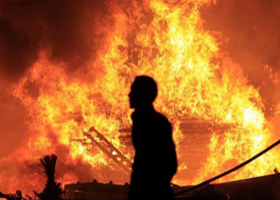

So noted Alan Cauberghs, senior investment director, fixed income, with Schroders, during his presentation on geopolitical risk and portfolio management at the 2016 Global Investment Conference which was held in San Diego, April 6-19 2016.
“A massive debt overhang means that most countries are unwilling or unable to pursue any military action,” he explained. “The creates an incentive to test each other’s boundaries without any threat of retaliation.”
With countries unable to pursue outright war, geopolitical risk is rising but its implications are more far-reaching and difficult to determine.
“Geopolitical risk is non-quantifiable,” Cauberghs explained. “That’s an issue today when we are fans of Excel spreadsheets. It doesn’t mean you can’t predict it – you just have to analyse it in a different way.”
As geopolitical risk extends beyond border disputes, Cauberghs pointed to new battlegrounds, including financial infrastructure. Take the Asian Infrastructure Bank as an example – emerging markets, finding themselves under-represented in supranational institutions, created their own financing vehicle.
Today, countries like China are able to build the infrastructure they need by financing it themselves. With the rest of the world shut out, it creates instability.
At the same time, sanctions against Russia and Iran that shut them out of the SWIFT clearing system are pushing such countries to create their own financial infrastructure. More instability could ensue.
Additional risks to global stability include challenges to the social contract in western countries, political instability and fragmentation, and demographic trends, such as population growth in China, which is proving unable to meet demand for food because of a labour shortage in rural areas and a lack of water.
“The Chinese want to use water from India – they are seeking to build a dam and move water to China,” Cauberghs explained, adding that the Indian government has not looked favourably on this move. “Is it a conflict in the making? Very possibly.”
However, investors should be looking at opportunities in water. Agriculture, or food production that address this geopolitical situation could be part of an investment portfolio.
Another geopolitical hot spot with implications for investors is Saudi Arabia. With a budget deficit of 20% and high unemployment among its younger population, Saudi Arabia is grappling with declining flows of oil from the Middle East to the rest of the world. Increasing tension with the U.S. over its support of Iran could destabilize Saudi Arabia’s decades-long commitment to provide all oil contracts in U.S. dollars.
While this a crisis that could take many years to play out, Cauberghs said investors should already be looking at the role of the U.S. dollar in their portfolios.
Ultimately, said Cauberghs, investors have to find different ways to identify and understand geopolitical risk in a meaningful portfolio context.
That also involves looking at different indicators to gauge hot spots – food prices for example, or fiscal deficits and population growth. In the context of geopolitical risk, these will tell investors a lot more than interest rates.
“Geopolitical risk isn’t risk management,” concluded Cauberghs. “It’s an active portfolio management decision. You need to understand all the sources of geopolitical risk and then work out potential outcomes, positioning the portfolio accordingly.”
Importantly – it can’t be hedged. “Geopolitical risk starts early and lingers,” he said. “It’s impossible to carry the cost of hedges for that period.”
Thinking about it as an active portfolio management decision is key.
